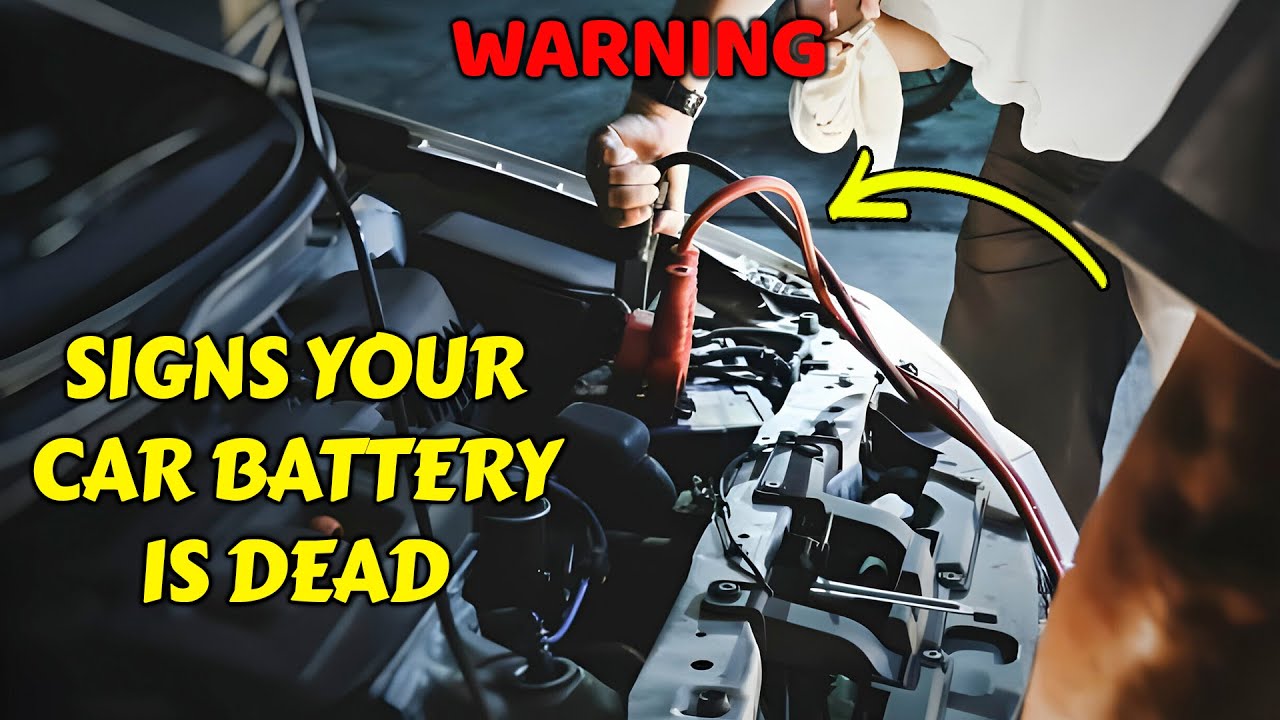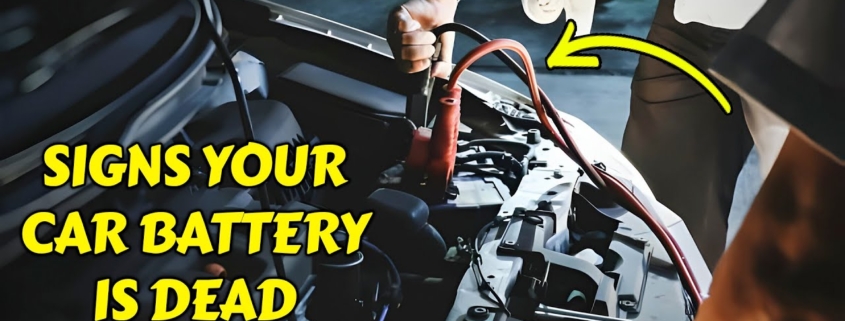How to Tell if Your Car Battery Is Dead? 12 Unmistakable Signs
Ever jumped into your car, turned the key, and… nothing?
That sinking feeling in your stomach says it all. You’re dealing with a potential dead battery situation.
But how to tell if your battery is dead for sure? That’s exactly what I’m going to cover in this comprehensive guide.
Let’s face it – battery problems never happen at convenient times. They strike when you’re already running late or when it’s freezing outside. That’s why knowing the warning signs can save you serious headaches.
In this guide, as a professional lithium battery pack manufacturer, I’ll show you 13 unmistakable signs that your battery is on its last legs or already dead. Plus, I’ll share some pro tips to extend your battery life that most mechanics won’t tell you.
Ready? Let’s dive in.

How to Tell if Your Car Battery Is Dead?
1. Your Car Won’t Start (The Most Obvious Sign)
This one’s a no-brainer.
You turn the key, and… crickets. Nothing happens.
Or worse, you hear that dreaded clicking sound.
When your engine doesn’t crank at all, it’s one of the clearest indicators your battery doesn’t have enough juice to get things moving.
But here’s the thing:
A non-starting car doesn’t automatically mean a dead battery. It could be the starter, alternator, or other electrical components.
That’s why you need to look for additional symptoms before blaming the battery.
2. Dim Headlights Tell a Clear Story
Here’s a quick test anyone can do:
Turn on your headlights while the car is parked. Are they dimmer than usual?
If your headlights look more like candles than actual lights, your battery is likely struggling to provide adequate power.
This symptom becomes even more obvious if your lights brighten when you rev the engine. That means the alternator is working, but the battery isn’t holding a charge properly.
3. The Dashboard Warning Light is Flashing
Modern vehicles don’t leave you guessing.
Most cars have a battery warning light on the dashboard that illuminates when there’s an issue with the charging system.
It usually looks like a battery symbol, and when it lights up, it’s time to pay attention.
Don’t ignore this warning! It’s your car’s way of saying “hey, we’ve got a power problem here!”
4. Electrical Components Acting Weird
Notice your power windows moving slower than usual?
Or maybe your radio keeps resetting its settings?
These quirky electrical behaviors are often early warning signs of a battery that’s on its way out.
As a battery loses its ability to hold a charge, the first things affected are usually the non-essential electrical components.
5. A Swollen Battery Case Means Trouble
This is a big one that many people miss.
Pop your hood and take a good look at your battery. Does it look bloated or swollen?
Extreme temperatures (both hot and cold) can cause the battery case to swell. Once this happens, your battery is essentially “electrically dead” and will need replacement.
Pro tip: Check your battery after extreme weather events – it could save you from being stranded.
6. The Smell Test Never Lies
Lean in (not too close) and take a whiff near your battery.
Do you smell something similar to rotten eggs?
That sulfuric odor is a telltale sign of a battery that’s leaking or has internal damage. It’s not just unpleasant – it’s a clear indicator your battery is failing.
And no, you can’t fix this with air freshener. Time for a replacement!
7. Your Battery is Simply Too Old
Here’s something I learned the hard way:
Car batteries have a lifespan, typically 3-5 years depending on use and climate.
Check the date code on your battery case. If your battery is four years old or more, it’s living on borrowed time.
Even if it seems to be working fine now, an aging battery is unpredictable and could leave you stranded without warning.
8. How to tell if your car battery is dead with a simple test
Not everyone has fancy testing equipment, but everyone has eyes and ears.
Try this simple test sequence:
- Turn on your headlights (while the engine is off)
- Attempt to start your car
- Watch what happens to the lights
If the headlights significantly dim or go out completely when you try to start the engine, your battery is likely the culprit.
This is probably the quickest way to distinguish between a battery problem and other potential issues like a faulty starter motor.
9. Corrosion Is a Dead Giveaway
Take a close look at your battery terminals.
See that white, green, or blue crusty stuff? That’s corrosion, and it’s basically kryptonite to your battery’s performance.
Corrosion creates resistance that prevents proper electrical flow, making even a good battery perform poorly.
While cleaning the terminals might help temporarily, extensive corrosion often indicates underlying battery issues that will require replacement soon.
10. The Computer Memory Test
This is interesting:
If your car’s onboard computer keeps forgetting settings – like your preset radio stations, clock time, or seat positions – it’s often a sign your battery isn’t holding enough charge when the engine is off.
Your vehicle’s computer systems need a constant trickle of power to maintain their memory. When that power gets inconsistent, settings get wiped.
11. Multiple Jump Starts in a Short Period
Need I say more?
If you’ve jumped your battery multiple times in recent weeks, the writing is on the wall.
A properly functioning battery should hold a charge for a reasonable period once it’s been jumped. If yours keeps dying, it’s time to face reality and get a replacement.
No amount of jumper cable gymnastics will fix a battery that’s reached the end of its life.
12. The Load Test Confirms Everything
If you’re still unsure after checking all other signs, a load test is your definitive answer.
Most auto parts stores will perform this test for free, as they’re hoping to sell you a new battery.
During a load test, specialized equipment measures how well your battery maintains voltage while under load – exactly what happens when you start your car.
This test removes all guesswork and gives you a clear yes or no answer about your battery’s health.
What to Do When Your Battery Shows Signs of Failing
Okay, so you’ve confirmed your battery is on its last legs. Now what?
First, don’t panic. Here are your next steps:
- Get a proper diagnosis: Have a professional confirm it’s truly the battery and not another component
- Consider your options: Replacement is usually the only real solution for a dead battery
- Choose the right replacement: Make sure to get the correct size and type for your vehicle
- Consider the warranty: Sometimes paying a bit more for a longer warranty makes financial sense
- Look into proper disposal: Car batteries contain hazardous materials and should be recycled properly
Remember, a new battery is far cheaper than being stranded on the side of the road or damaging other electrical components by continuing to use a failing battery.
The Bottom Line
Detecting a dead or failing battery isn’t rocket science. The 13 signs we’ve covered give you a comprehensive toolkit to spot trouble before it leaves you stranded.
From the obvious (car won’t start) to the subtle (slight dimming of headlights), your vehicle gives plenty of warnings before complete battery failure.
The key is paying attention to these signals and taking action promptly.
Remember that extreme weather, age, and driving habits all affect battery life. Even the best battery will eventually need replacement.
By knowing how to tell if your battery is dead and taking proactive steps, you’ll save yourself time, money, and a whole lot of frustration.
Have you dealt with a dead battery recently? Which of these signs did you notice first? Drop a comment below – I’d love to hear your experience!








